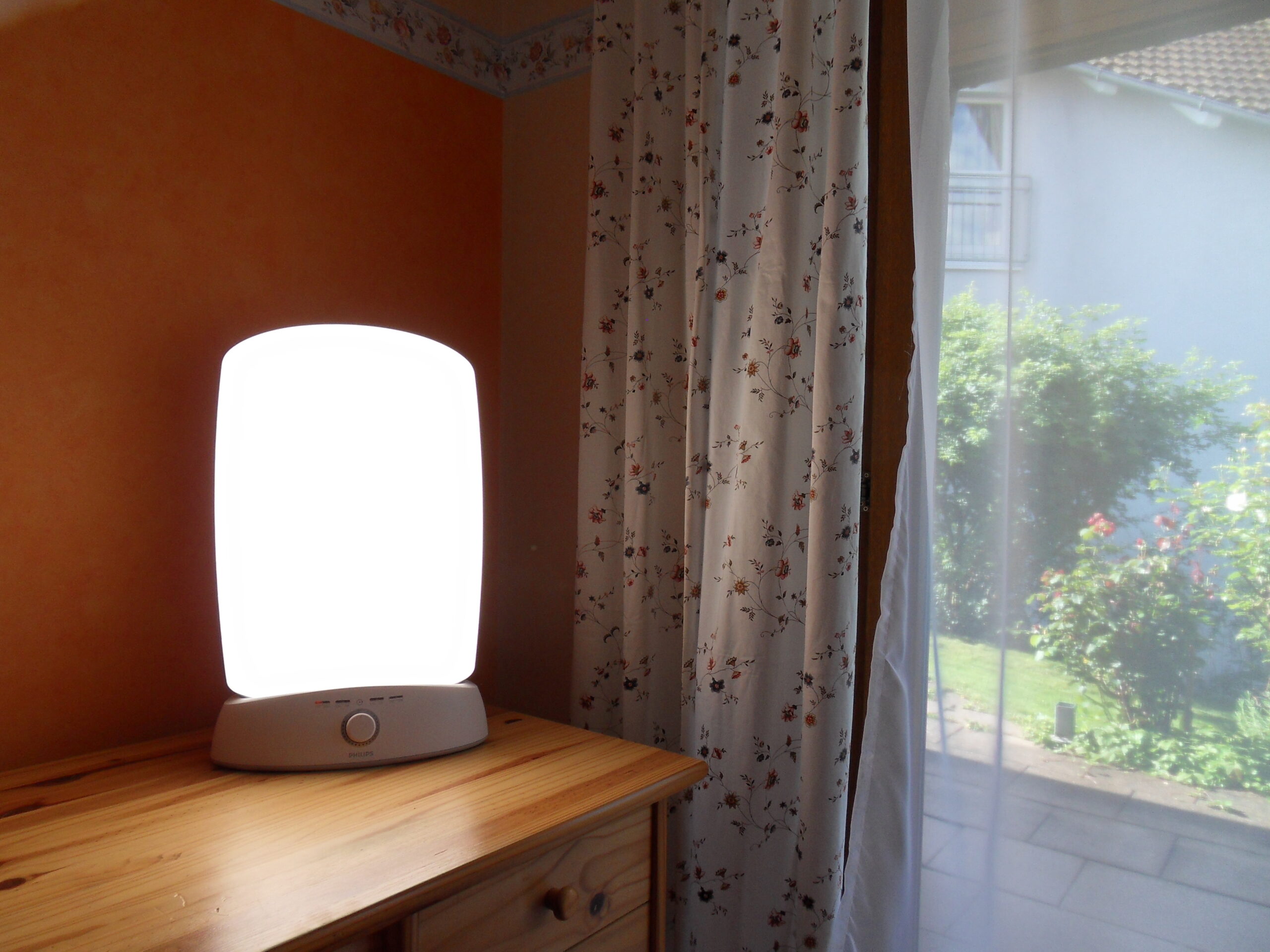Chapter 6. States of Consciousness
SC.4: Deep Dive – Jet Lag: Coping Strategies
Approximate reading time: 10 minutes
Jet lag, a disruption of our circadian rhythms due to rapid travel across time zones, manifests in symptoms like fatigue, mood changes, and sleep disturbances (Sack, 2017). This misalignment between our internal biological clock and the external environment impacts not only our sleep patterns but also cognitive and physical health. Studies have shown that jet lag can impair memory and learning (Song et al., 2018), and affect the gastrointestinal system (Lei et al., 2019), indicating its extensive influence on bodily functions.
An evidence-based method for dealing with jet lag involves light therapy, which is recognized for its effectiveness in resetting our internal clocks. Exposure to light plays a crucial role in adjusting our circadian rhythms. A study by Burgess et al. (2018) demonstrated that controlled exposure to bright light (Figure SUP SC.1) can significantly reduce the symptoms of jet lag. This approach involves exposing oneself to light at specific times that align with the new time zone, thereby aiding the body’s adjustment process. Additionally, gradual adjustments to sleep schedules before traveling and strategic napping during the journey can also help mitigate the effects of jet lag (Herxheimer, 2017; Riemann et al., 2017).

Bright light therapy can also be helpful for people working on rotating shifts (Harrington, 2010; Kori, Yamaguchi, & Okamura, 2017; Revell, Molina, & Eastman, 2012). Since our biological clock is influenced by light, being exposed to bright light while working and avoiding light when off duty can help fight insomnia and reduce anxiety and depression (Huang, Tsai, Chen, & Hsu, 2013). Bright light therapy’s effectiveness can vary, and it may have negative effects if used too much or inappropriately (Albrecht & Ripperger, 2018; Rea, Bierman, Figueiro, & Bullough, 2008; Lunn et al., 2017).
Watch this video: What is Jetlag? – Naked Science Scrapbook (6 minutes)
“What is Jetlag? – Naked Science Scrapbook” video by NakedScientists is licensed under the Standard YouTube licence.
Image Attributions
Figure SUP SC.1. Light therapy device Philips HF3319/01 Energy Light. Light intensity compared to indirect daylight in the shade, filtered through white curtains (circa 11.00 a.m.) By Slllu – own work – is in the Public Domain.
To calculate this time, we used a reading speed of 150 words per minute and then added extra time to account for images and videos. This is just to give you a rough idea of the length of the chapter section. How long it will take you to engage with this chapter will vary greatly depending on all sorts of things (the complexity of the content, your ability to focus, etc).

